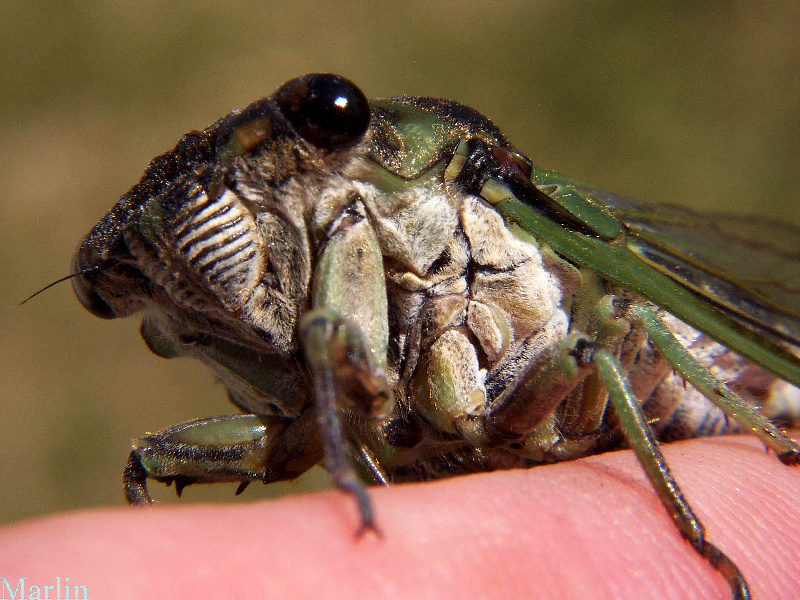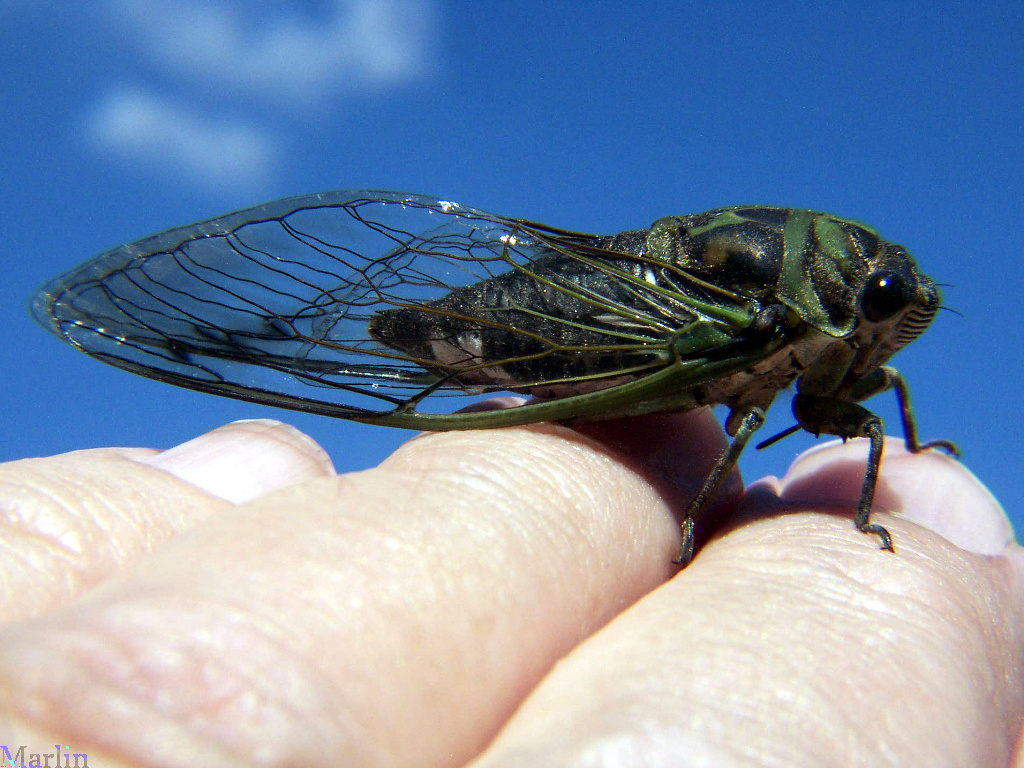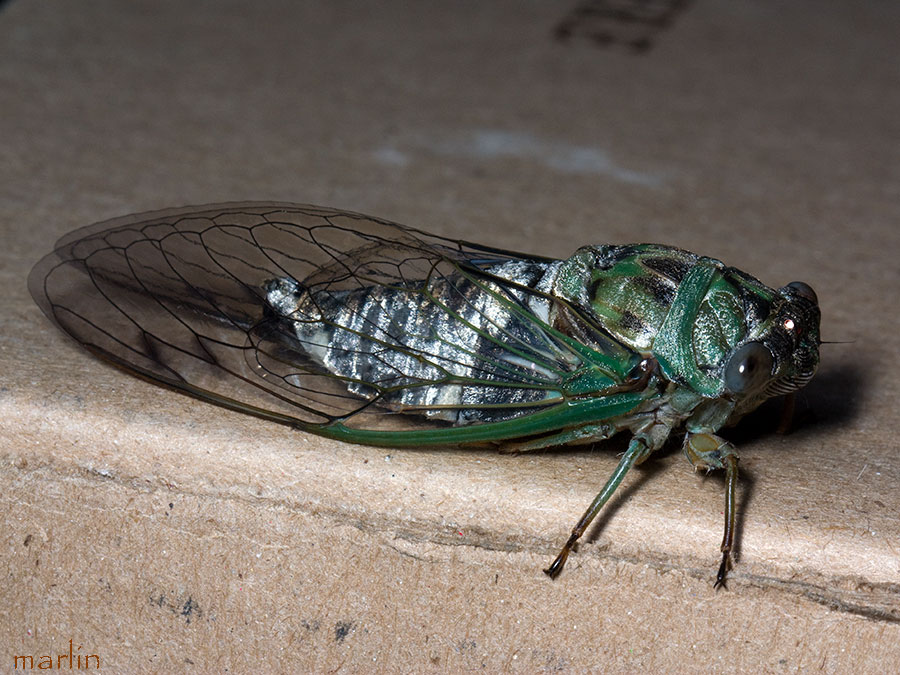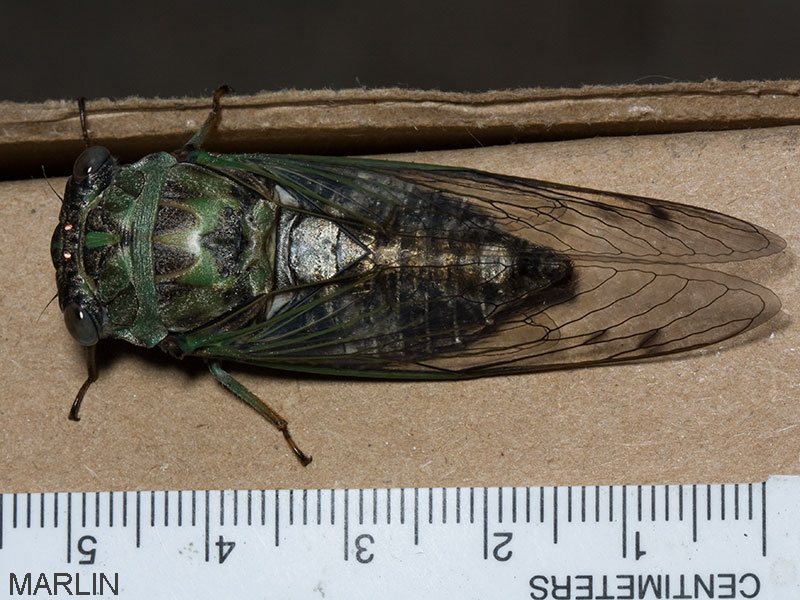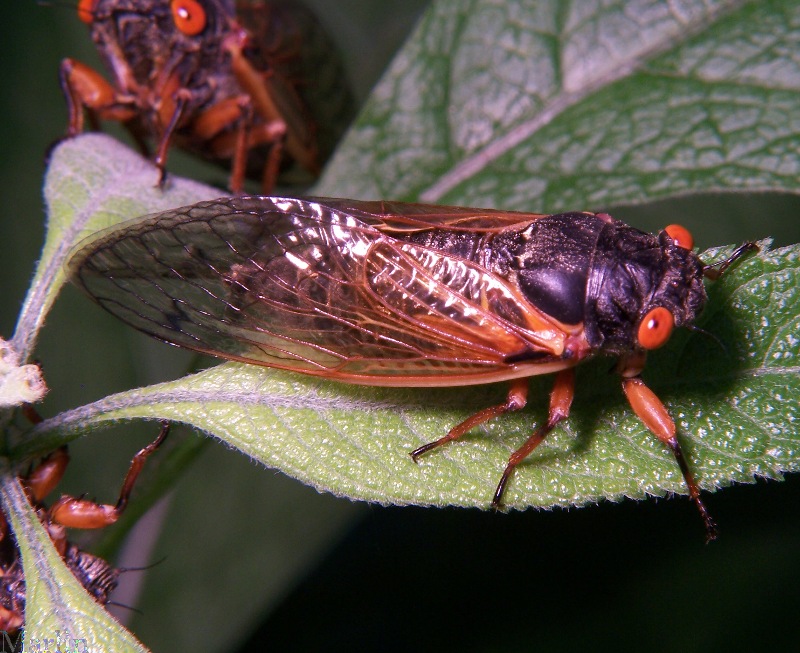|
Annual Cicada - Tibicen linnei |
|
|
| The Homoptera have the dubious distinction of being probably the most
destructive insects of all. They include aphids, leafhoppers, cicadas, and
scale insects: approximately 45,000 species worldwide, 6,000 in North
America. Some taxonomists place the Homoptera with true bugs, but the
current thinking is, the differences are great enough to place them in
their own order. Homopteran wings are uniformly membranous, unlike the true bugs which have a leathery portion at the base of their wings. All Homopterans feed exclusively on plants, but their diets vary tremendously, as do their reproductive methods. Many species reproduce sexually, while others do so parthenogenically (without mating). Cicadas and leafhoppers mate sexually, and most females have large ovipositors which they use to deposit eggs into slits they cut in plant tissue. But Aphids can reproduce without having sex, and are among the most destructive of all homopterans - theoretically, one female aphid is capable of producing billions of offspring. All homopterans undergo simple metamorphosis. Many insects in this order exude waxy secretions which protect them from attack and make them impervious to water; others secrete a sweet secretion called honeydew. Members of the order hymenoptera, the ants, have learned to "farm" aphids for their secretions -- in turn, they protect the aphid colonies from attack by other predators and parasites. This symbiotic relationship is one of the most fascinating in nature. |
|
|
|
There are about 2,000 species of cicadas worldwide, most
of them found in tropical or temperate regions. Most of the more than 100
species found in North America have short life cycles, between two and
eight years. They are known as annual or dog-day cicadas because they
usually emerge during mid to late summer (July and August). There are 12 broods, or year classes, among the 17-year cicadas and three broods of 13-year cicadas so that in almost any given year it is possible to find adult periodic cicadas somewhere in the U.S.. The significance of 17 and 13 is their being prime numbers; would-be predators' life cycles, be they even or odd years cannot match the prime number of years. The emergence of 17-year periodic cicada, Magicicada sp. brood XIII, in 2007, near Chicago, was a sight (and sound!) to behold. Yet there were areas of the Chicago suburbs that had nearly none, others were overwhelmed and the insects crunched underfoot on the sidewalks! The din at the Morton Arboretum, near Lisle was incredible.
Periodic cicadas are found in eastern North America and belong to the genus Magicicada. There are seven species, four with 13-year life cycles, and three with 17-year cycles. The three 17-year species are generally northern in distribution, while the 13-year species are generally southern and midwestern. Periodic cicadas generally emerge in May and June, apparently when the soil temperature reaches 64° Fahrenheit (18° Celsius). This means that emergences in southern and low-lying areas occur earlier in the summer than in the cooler northern locations.
|

